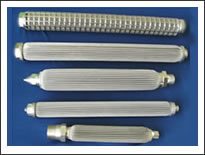Wire Mesh Manufacturers
 | WMM CHINA
| WMM CHINAChina Wire Mesh Manufacturers can help. Contact Us Now!
 Wire Mesh
Wire Mesh
Home > wire mesh >
Filter elements generally may be divided into two classes
 FROM Date:2006-12-25 Author :admin
FROM Date:2006-12-25 Author :adminFilter elements generally may be divided into two classes—surface and depth. Surface filters are made of closely woven fabric or treated paper with a uniform pore size. Fluid flows through the pores of the filter material and contaminants are stopped on the filter’s surface. This type of element is designed to prevent the passage of a high percentage of solids of a specific size. Depth filters, on the other hand, are composed of layers of fabric or fibers which provide many tortuous paths for the fluid to flow through. The pores or passages must be larger than the rated size of the filter if particles are to be retained in the depth of the media rather than on the surface. Consequently, there is a statistical probability that a rather large particle may pass through a depth-type filter. Filter elements may be of the 5-micron, woven mesh, micronic, porous metal, or magnetic type. The micronic and 5-micron elements have noncleanable filter media and are disposed of when they are removed. Porous metal, woven mesh, and magnetic filter elements are usually designed to be cleaned and reused.

Post your offers now!
Fill In Your Wire Mesh Inquiry
Get Quick and Effective Responses from our related members- Woven Filter Cloth
- enquiry of electro galvanized wire
- Aluminum Chain Link Fence
- Metal Scraper Mat
- Stainless steel welding wire
- Stainless Steel Pipe Fittings
- Stainless Steel Balls for Ball Valv
- Architectural Wire Mesh
- Wire Shelves
- Wire Baskets
- Wire Mesh Containers
- 2 tier wire mesh Locker
- Woven Wire Fabric: Member Manufactu
- Wire Fabrics for Reinforcement
- Welded Wire Fabric